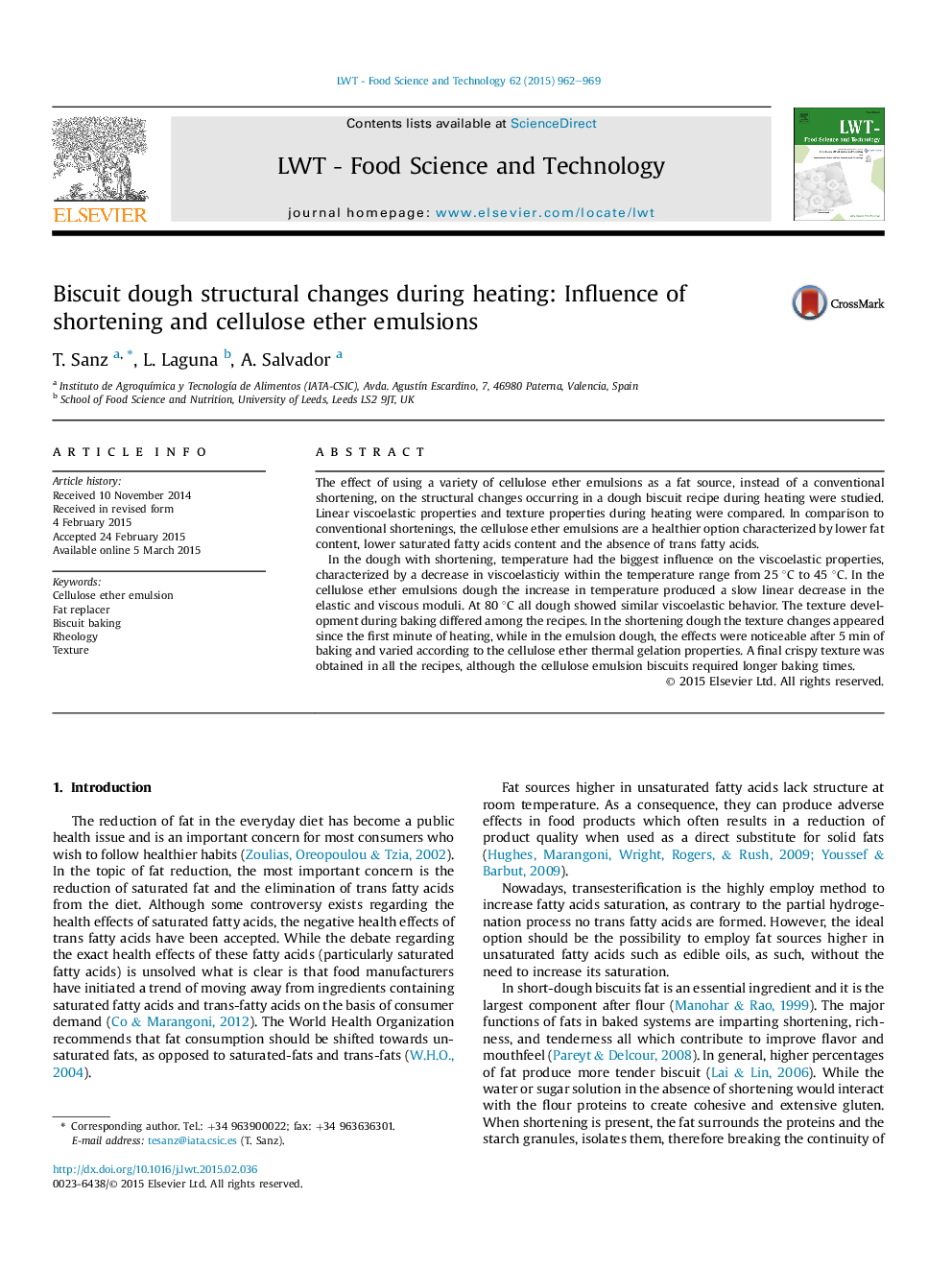| Article ID | Journal | Published Year | Pages | File Type |
|---|---|---|---|---|
| 6400593 | LWT - Food Science and Technology | 2015 | 8 Pages |
â¢The structural changes occurring during baking biscuit dough's were studied.â¢Different cellulose ether emulsions as fat sources were evaluated.â¢Linear viscoelastic properties and texture properties were studied.â¢The evolution from dough to biscuit was different in emulsion dough's.â¢The cellulose emulsions provide a suitable final texture.
The effect of using a variety of cellulose ether emulsions as a fat source, instead of a conventional shortening, on the structural changes occurring in a dough biscuit recipe during heating were studied. Linear viscoelastic properties and texture properties during heating were compared. In comparison to conventional shortenings, the cellulose ether emulsions are a healthier option characterized by lower fat content, lower saturated fatty acids content and the absence of trans fatty acids.In the dough with shortening, temperature had the biggest influence on the viscoelastic properties, characterized by a decrease in viscoelasticiy within the temperature range from 25 °C to 45 °C. In the cellulose ether emulsions dough the increase in temperature produced a slow linear decrease in the elastic and viscous moduli. At 80 °C all dough showed similar viscoelastic behavior. The texture development during baking differed among the recipes. In the shortening dough the texture changes appeared since the first minute of heating, while in the emulsion dough, the effects were noticeable after 5 min of baking and varied according to the cellulose ether thermal gelation properties. A final crispy texture was obtained in all the recipes, although the cellulose emulsion biscuits required longer baking times.
